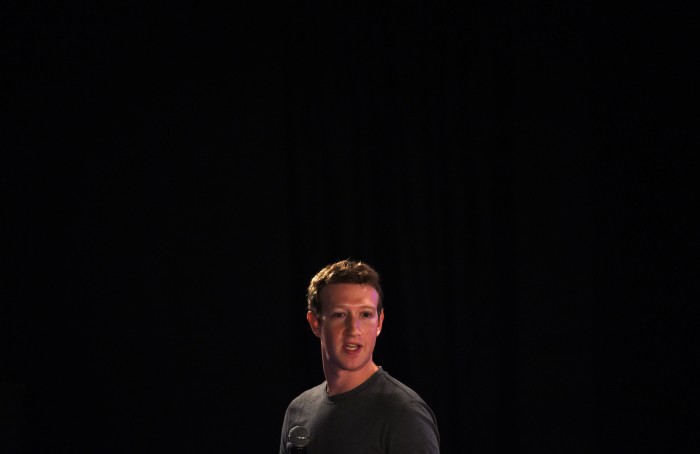Mark Zuckerberg Has Laid Out His Vision of a World United by Facebook

Mark Zuckerberg wants to burst your social-media bubble.
That’s the overarching message of a 6,000-word missive he published on Thursday. In it, he describes his vision for the future of his social network. It pretty much boils down to this: Facebook has already connected friends and family, and now it plans to break down barriers to connect communities, online and off, in order to build one big, happy global family.
Zuckerberg envisions a future where Facebook tempts users out of their personalized echo chambers (you know, the ones it creates to keep you coming back to your News Feed, where it can show you ads) and imbues us all with civic pride. “History is the story of how we’ve learned to come together in ever greater numbers—from tribes to cities to nations,” he writes. “At each step, we built social infrastructure like communities, media and governments to empower us to achieve things we couldn’t on our own.”
Now is the moment, he says, for Facebook to “develop the social infrastructure to give people the power to build a global community that works for all of us.” And by coming together, he argues, we’ll be able to solve some of the largest problems facing society—“ending terrorism, fighting climate change, and preventing pandemics.”
This man is not short of ambition. But he is a little lacking in detail.
He identifies some themes that will be essential to get right across the social network if he’s to pull off the utopian vision of a world united by Facebook. They are largely sensible. He believes, for example, that people should be provided with reliable and well-rounded information—something that is at least somewhat backed up by the company’s current attempts to fight fake news.
Following some missteps last year with the way it handles content—it famously blocked a stream of Philando Castile’s shooting by police in Minnesota—Zuckerberg suggests that AI could be used to weed out troubling content. And he describes how digital tools—such as the site’s Safety Check feature, which allows people to confirm their well-being during times of disaster—can be extended to aid in disaster response.
There’s more, a lot more—much of it wandering into vague territory. Mostly, though, it’s all in line with Zuckerberg’s declarations from last year, which included grand visions of retooling the Internet to ensure that everyone on the planet has a Web connection (and, presumably, a Facebook account).
But as our own Tom Simonite pointed out late last year, Facebook is at a crossroads: it’s growing ever more powerful, amassing ever more users, brimming with ever more grandiose vision—and yet is struggling in the face of growing criticism. Zuckerberg is well aware of the problem, and he has thousands of words to say on how he plans to shape the social network to pacify critics and improve the world.
Thing is, he still has to show that he can actually do it.
(Read more: “Facebook at a Crossroads,” “Facebook’s Three-Point Plan to Get Four Billion More People Online,” “Facebook Will Try to Outsource a Fix for Its Fake-News Problem”)
Keep Reading
Most Popular
Large language models can do jaw-dropping things. But nobody knows exactly why.
And that's a problem. Figuring it out is one of the biggest scientific puzzles of our time and a crucial step towards controlling more powerful future models.
The problem with plug-in hybrids? Their drivers.
Plug-in hybrids are often sold as a transition to EVs, but new data from Europe shows we’re still underestimating the emissions they produce.
How scientists traced a mysterious covid case back to six toilets
When wastewater surveillance turns into a hunt for a single infected individual, the ethics get tricky.
Google DeepMind’s new generative model makes Super Mario–like games from scratch
Genie learns how to control games by watching hours and hours of video. It could help train next-gen robots too.
Stay connected
Get the latest updates from
MIT Technology Review
Discover special offers, top stories, upcoming events, and more.